My oh My -- Can't Call them C*nts or C*cks*ckers But Kissigner/Cheney/Bush & Obama, Just Good Old American Boys
...but a motherfucking Chlamydia Capitalist and Cunt and Cock-Sucker Must be Called the spade is a spade . . . . Century of the Jew, and the Jewish Raping Murdering Poisoning Maiming Poisoning Israel
This is from Cindy Sheehan. Yep, it is strange, but some of us knew the epitome of evil was the Complex, the Eichmann’s big and small, the billionaires and the entire POTUS scum-bucket parade. Cheney was nothing compared to McNamara or Curtis Emerson LeMay (November 15, 1906 – October 1, 1990) or Truman or Eisenhower or . . . . How many thousands of more of them do we need to know that war criminals get to play with TV stunted stars?
Yes, that was me at the Cowboys game with George W. Bush!
+—+
Cindy: “In the 2000s it was a trope in comedy that Dick Cheney was like, the epitome of evil. EVERYBODY knew this. He was an oil company executive that made a killing in Iraq, and a warmonger. NOBODY liked him. I was a kid but I was a politics nerd and I distinctly remember this. There are people who were adults 20 years ago who do not seem to remember and are applauding him and the rest of these washed up neocons for endorsing Harris. It’s wild how short people’s memories are when they want to delude themselves.”
Broke Back Mountain on Poppers!
Say what? “Palestinian lives are cheap”; so are pro-Palestinian American lives – Day 336.
Palestinian lives are worth about the same as Chinese in the 1900s, through 1950s, and Vietnamese and Congolese and Lakota Sioux and, Christ, do we get this yet?
Did you want Dresden?
In 1945, the Air Force sent a thirty-eight-year-old major general named Curtis LeMay to the Pacific to direct its ineffectual air war against Japan, where the newly discovered jet stream was playing havoc with high-altitude precision bombing. The New Yorker reporter St. Clair McKelway, who was serving as a public-relations officer on Guam, described the General’s arrival in these pages:
“He was around a few days, said almost nothing to anybody, was what, by civilian standards, would be called rude to many people. He was a big, husky, healthy, rather stocky, full-faced, black-haired man.”
He chewed a cigar stub to disguise the Bell’s palsy that he’d got from flying high and cold; it made one side of his lower lip droop. He spoke, McKelway wrote, “through teeth that had obviously been pried open only with effort, an effort with which the speaker had no real sympathy.”
He was a warrior as hard as Ulysses S. Grant, a bomber pilot, a big-game hunter: dark, fleshy, smart.
“I’ll tell you what war is about,” he once said with characteristic bluntness. “You’ve got to kill people, and when you’ve killed enough they stop fighting.”
LeMay studied the mission reports and reconnaissance photographs, realized that the Japanese had almost no air defense left, and sent three hundred and twenty-five planes loaded with jellied-gasoline firebomb clusters over Tokyo in the early hours of March 10, 1945.
“You’re going to deliver the biggest firecracker the Japanese have ever seen,” he told his crews. As he waited impatiently for the bombers to return, he confided to McKelway, “In a war, you’ve got to try to keep at least one punch ahead of the other guy all the time. A war is a very tough kind of proposition. If you don’t get the enemy, he gets you. I think we’ve figured out a punch he’s not expecting this time.”
The mission succeeded: the United States Strategic Bombing Survey estimated that “probably more persons lost their lives by fire at Tokyo in a 6-hour period than at any time in the history of man.” LeMay’s subsequent mission report emphasized that the object of the attack “was not to bomb indiscriminately civilian populations.” But the destruction that first windy night was in fact indiscriminate to the point of atrocity, as LeMay himself understood: nearly seventeen square miles of the Japanese capital burned to the ground, with at least a hundred thousand people killed and hundreds of thousands injured.
The Israeli army has killed 61 more Palestinians in attacks on the Gaza Strip, raising the overall death toll to 40,939 since October 7, 2023, according to the Health Ministry in the enclave on Saturday.
The ministry also reported that approximately 94,616 people have been injured in the ongoing assault.
“Israeli forces killed 61 people and injured 162 others in four ‘massacres’ against families in the last 48 hours,” the statement said.
“Many people are still trapped under rubble and on the roads as rescuers are unable to reach them,” it added.
Feb. 13, 1945. Dresden was defenceless, its anti-aircraft guns removed to the Eastern Front, the Luftwaffe, Germany’s air force, decimated. There was not a single reinforced, ventilated shelter in the city, except for high-level Nazis and the SS.
At 10:03 p.m., a single Royal Air Force (RAF) Lancaster bomber dropped a green bomb to mark the aiming point, a stadium. It and others dropped flares to completely light up the city. Mosquito bombers, swooping down from 20,000 feet, dropped red flares that lit a path for 244 Lancasters that followed, carrying four- pound magnesium incendiary bombs and 4,000-pound blast bombs. Only 10 German fighters engaged them. The British could jam their radar. No British planes were shot down.
Incendiaries rained down in the tens of thousands. On their own, each one could be put out with a pail of sand. But the inhabitants, sheltering in basements, were unable to get to them. The blast bombs ruptured watermains and blew out the doors and windows of buildings, creating through drafts which, along with the strong wind blowing, fanned the flames.
The bombing was over in 20 minutes, but three hours later, 524 Lancasters – 67 Canadian – returned. First responders on the scene were killed. Thousands of little fires came together and created an inferno 100 metres tall, 1,000 degrees Celsius at the top, sustaining itself by drawing in all the surrounding oxygen, creating gale force winds that sucked anyone nearby into the flames. People in basement shelters inhaled carbon monoxide. Deprived of oxygen, they died. Streets turned into tar. People fleeing got stuck. Incinerated, mummified corpses were glued to the asphalt. Lampposts melted. Desperate people jumped into cement-lined reservoirs. Eventually the water got hot. Unable to get out, they cooked to death.
Thirty magnificent buildings – palaces, churches, museums, an opera house, constituting one of the most impressive collections of architecture in the world, built over three centuries in styles ranging from Renaissance through Baroque to Roccoco and neo-Classical – were either destroyed or severely damaged. The 1734 Frauenkirche, the most beautiful Protestant ecclesiastical building of the 18th century with superb acoustics and an organ built by Silbermann, the Stradivarius of organ makers (its inaugural soloist was Johann Sebastian Bach), collapsed.
But the 1840 Semper Synagogue, named after its famous architect, Romanesque exterior, Alhambresque interior, the most beautiful in Germany, could not be destroyed. That had happened on Kristallnacht.
These 7,428 tons of bombs would not be the end of it. The following day the U.S. dispatched 417 (or 461, depending on which historian you believe) B-17 bombers escorted by 784 P-51 Mustang fighters against the Dresden train marshalling and repair yards, a target of military value, to stop German resupply of its Eastern Front 75 kilometres away. Only 316 bombers (or 311) arrived and dropped 782 tons of bombs. The other bombers and their escorts got lost and bombed Prague, 117 kilometres away, by mistake. The following day, American bombers sent to target a synthetic oil plant couldn’t locate it because of fog, so bombed the rubble of Dresden instead.
Thousands of corpses were dumped in the town square and set on fire to prevent the spread of disease. Thirty-four square kilometres of the city were obliterated.
The last official wartime record put the number of dead at 22,096, though 1,800 more were unearthed as the city was rebuilt. With soldiers at the front, most of these were civilians, the primary targets of most British air raids up to that point. How could such a policy have been tolerated, even against civilians for the most part willingly and slavishly following a foaming at the mouth monster?
The British did not have a problem with targeting civilians. They won the Boer War by inventing the concentration camp. During the First World War they instituted a naval blockade that treated food like war materiel. But this time the Luftwaffe started it: the bombing raids on Guernica, Warsaw, Rotterdam, London and Coventry were attempts to bring the other side to its knees by terrifying non-combatants and destroying morale. Arthur “Bomber” Harris, who became head of RAF Bomber Command in February 1942, quoted Hosea 8:7: “They have sown the wind and they will reap the whirlwind.”
When the war started, the RAF could not reliably navigate anywhere, let alone drop a bomb on a precision military target. The Butt Report of August 1941 found that only one-third of pilots who reported attacking an assigned target had bombed within eight kilometres. It was one-fifteenth on moonless nights.
To bomb anything they had to bomb everything.
By contrast, the U.S. Air Force (USAF) believed in precision bombing of military targets. Its pilots, therefore, flew daytime raids in B-17s which had many guns, thinking that in tight formation they could ward off German fighters. They couldn’t.
On a clear and sunny Aug. 17, 1943, for example, the USAF’s 100th Bombardment Group, led by Curtis LeMay, attacked the Messerschmitt factory in Regensburg, losing nine of 21 planes. In October of that year, 26 per cent of planes attacking the ball bearing factory in Schweinfurt were lost. This was unsustainable
Meanwhile, Harris, backed by Prime Minister Winston Churchill, continued pulverizing German cities by night, thinking he could break German morale and end the war. He couldn’t. In November 1943, he launched what would total 35 major missions comprising 20,244 sorties against Berlin, claiming the loss of 400-500 planes would “cost Germany the war.” By March 1944, 1,047 had been shot down, 1,682 damaged and the war raged on according to P.P. O’Brien’s How the War was Won. By the time Harris got to Dresden, Germany’s major cities had been severely bombed, yet it was still fighting tenaciously. (Germans couldn’t exactly write their MPs demanding an end to the war.)
The Americans, however, understood the key to victory: destroying the Luftwaffe. To do that they built agile fighter planes with enough range to accompany bombers anywhere in Germany. They decimated the Luftwaffe’s fighters and controlled the skies by the spring of 1944, enabling destruction of bridges and other transport infrastructure in Normandy, without which, the invasion might have been repulsed. U.S. bombers then went after German key industries, synthetic oil plants and, importantly, transportation infrastructure without which coal could not be delivered to factories thus rendering them idle. Anything produced could not be shipped to where it was needed.
The collection of Dresden’s art museum, one of the world’s most important, was removed to various nearby castles at the start of the war. As the Russians approached, the collection in one of the easternmost castles, Schloss Milkel, was to be moved to Schloss Schieritz, north of Dresden.
You want fucking 16 years ago, that other fucking BIPOC-Sorta-Black President (he got it, not yet so for Emoff-Harris)
John Pilger on President Obama: Don’t believe the hype
Barack Obama is being lauded by liberals but the truth about him is that he represents the worst of the world's power.
My first visit to Texas was in 1968, on the fifth anniversary of the assassination of President John F Kennedy in Dallas. I drove south, following the line of telegraph poles to the small town of Midlothian, where I met Penn Jones Jr, editor of the Midlothian Mirror. Save for his drawl and fine boots, everything about Penn was the antithesis of the Texas stereotype. Having exposed the racists of the John Birch Society, his printing press had been repeatedly firebombed. Week after week, he painstakingly assembled evidence that all but demolished the official version of Kennedy’s murder.
This was journalism as it had been before corporate journalism was invented, before the first schools of journalism were set up and a mythology of liberal neutrality was spun around those whose “professionalism” and “objectivity” carried an unspoken obligation to ensure that news and opinion were in tune with an establishment consensus, regardless of the truth. Journalists such as Penn Jones, independent of vested power, indefatigable and principled, often reflect ordinary American attitudes, which have seldom conformed to the stereotypes promoted by the corporate media on both sides of the Atlantic.
Read American Dreams: Lost and Found by the masterly Studs Terkel, who died on 31 October, or scan the surveys that unerringly attribute enlightened views to a majority who believe that “government should care for those who cannot care for themselves” and are prepared to pay higher taxes for universal health care, who support nuclear disarmament and want their troops out of other people’s countries.
Returning to Texas, I am struck again by those so unlike the redneck stereotype, in spite of the burden of a form of brainwashing placed on most Americans from a tender age: that theirs is the most superior society in the world, and all means are justified, including the spilling of copious blood, in maintaining that superiority.
That is the subtext of Barack Obama’s “oratory”. He says he wants to build up US military power; and he threatens to ignite a new war in Pakistan, killing yet more brown-skinned people. That will bring tears, too. Unlike those on election night, these other tears will be unseen in Chicago and London. This is not to doubt the sincerity of much of the response to Obama’s election, which happened not because of the unction that has passed for news reporting since 4 November (eg, “liberal Americans smiled and the world smiled with them”), but for the same reasons that millions of angry emails were sent to the White House and Congress when the “bailout” of Wall Street was revealed, and because most Americans are fed up with war.
Two years ago, this anti-war vote installed a Democratic majority in Congress, only to watch the Democrats hand over more money to George W Bush to continue his blood-fest. For his part, the “anti-war” Obama voted to give Bush what he wanted. Yes, Obama’s election is historic, a symbol of great change to many. But it is equally true that the American elite has grown adept at using the black middle and management class. The courageous Martin Luther King recognised this when he linked the human rights of black Americans with the human rights of the Vietnamese, then being slaughtered by a “liberal” Democratic administration. And he was shot. In striking contrast, a young black major serving in Vietnam, Colin Powell, was used to “investigate” and whitewash the infamous My Lai massacre. As Bush’s secretary of state, Powell was often described as a “liberal” and was considered ideal to lie to the United Nations about Iraq’s non-existent weapons of mass destruction. Condaleezza Rice, lauded as a successful black woman, has worked assiduously to deny the Palestinians justice.
Obama’s first two crucial appointments represent a denial of the wishes of his supporters on the principal issues on which they voted. The vice-president-elect, Joe Biden, is a proud warmaker and Zionist. Rahm Emanuel, who is to be the all-important White House chief of staff, is a fervent “neoliberal” devoted to the doctrine that led to the present economic collapse and impoverishment of millions. He is also an “Israel-first” Zionist who served in the Israeli army and opposes meaningful justice for the Palestinians – an injustice that is at the root of Muslim people’s loathing of the US and the spawning of jihadism.
No serious scrutiny of this is permitted within the histrionics of Obama mania, just as no serious scrutiny of the betrayal of the majority of black South Africans was permitted within the “Mandela moment”. This is especially marked in Britain, where America’s divine right to “lead” is important to elite British interests. The Observer, which supported Bush’s war in Iraq, echoing his fabricated evidence, now announces, without evidence, that “America has restored the world’s faith in its ideals”. These “ideals”, which Obama will swear to uphold, have overseen, since 1945, the destruction of 50 governments, including democracies, and 30 popular liberation movements, causing the deaths of countless men, women and children.
None of this was uttered during the election campaign. Had that been allowed, there might even have been recognition that liberalism as a narrow, supremely arrogant, war-making ideology is destroying liberalism as a reality. Prior to Blair’s criminal warmaking, ideology was denied by him and his media mystics. “Blair can be a beacon to the world,” declared the Guardian in 1997. “[He is] turning leadership into an art form.”
Today, merely insert “Obama”. As for historic moments, there is another that has gone unreported but is well under way – liberal democracy’s shift towards a corporate dictatorship, managed by people regardless of ethnicity, with the media as its clichéd façade. “True democracy,” wrote Penn Jones Jr, the Texas truth-teller, “is constant vigilance: not thinking the way you’re meant to think, and keeping your eyes wide open at all times.”
+—+
Here we go with that FUCKING Harris-Biden-Emoff-Schumer-Zyklon Blinken and the rest of the fucking rabid rotting AmeriKKKans.
+—+
Fucking Lying Jews of Israel.
+—+
“They” are coming after media, that is, real journalists.
Barely two months into Drop Site's tenure, we have made enemies of at least three governments, been banned in one country, and censored by the largest social-media platform in the world. Pakistan's military government has banned Drop Site News from being read inside the country, following a sweeping series of investigative reports that have rocked the embattled leadership. The military followed the ban with threats of further legal action and accusations from military-linked officials that Drop Site is "being funded by Jew and Indian lobbies," mixing antisemitism with anti-Indian attitudes. Instagram and Facebook, meanwhile, have periodically blocked the sharing of Drop Site's coverage of the ongoing genocide in Gaza on Meta platforms. And following an investigation into the U.S.-linked attorney general of Ecuador, allies of the right-wing government have accused Drop Site of being established and funded by the leftist party of Rafael Correa for the express purpose of undermining the government. We're just getting started, but drawing these kinds of unhinged and ferocious responses from centers of power was precisely our goal when we launched Drop Site News. There will be plenty more to come -- especially as we can now rely on our growing base of readers to fight back.
+—+
LINK.
+—+
And so the average American “just can’t take it anymore. Why all the hundreds of years of fighting in the middle east? They have been at each others’ throats for thousands of years. I have a job, I have precarity, I have anxiety and C-PTSD, I have family fracturing, I have mental demands, physical disabilities, money problems, and we have our own state with no housing for the poor, no help with rural communities, no medical safety nets. I can’t give a nickel’s worth of my time for Palestine. I don’t hate them, but I am overwhelmed by me, myself, I and my own state’s problems.”
+—+
Fuck agnotology, lack of empathy, lack of thinking, lack of critical thought, fuck them all to HELL.
How Britain Destroyed the Palestinian Homeland
100 years since Balfour’s “promise”, Palestinians insist that their rights in Palestine cannot be dismissed.
By Ramzy Baroud
When I was a child growing up in a Gaza refugee camp, I looked forward to November 2. On that day, every year, thousands of students and camp residents would descend upon the main square of the camp, carrying Palestinian flags and placards, to denounce the Balfour Declaration.
Truthfully, my giddiness then was motivated largely by the fact that schools would inevitably shut down and, following a brief but bloody confrontation with the Israeli army, I would go home early to the loving embrace of my mother, where I would eat a snack and watch cartoons.
At the time, I had no idea who Balfour was, and how his “declaration” all those years ago had altered the destiny of my family and, by extension, my life and the lives of my children as well.
All I knew was that he was a bad person and, because of his terrible deed, we subsisted in a refugee camp, encircled by a violent army and by an ever-expanding graveyard filled with “martyrs”.
Decades later, destiny would lead me to visit the Whittingehame Church, a small parish in which Arthur James Balfour is now buried.
While my parents and grandparents are buried in a refugee camp, an ever-shrinking space under a perpetual siege and immeasurable hardship, Balfour’s resting place is an oasis of peace and calmness. The empty meadow all around the church is large enough to host all the refugees in my camp.
The British government remains unrepentant after all these years. It has yet to take any measure of moral responsibility, however symbolic, for what it has done to the Palestinians.
Finally, I became fully aware of why Balfour was a “bad person”.
Once Britain’s Prime Minister, then the Foreign Secretary from late 1916, Balfour had pledged my homeland to another people. That promise was made on November 2, 1917, on behalf of the British government in the form of a letter sent to the leader of the Jewish community in Britain, Walter Rothschild.
At the time, Britain was not even in control of Palestine, which was still part of the Ottoman Empire. Either way, my homeland was never Balfour’s to so casually transfer to anyone else. His letter read:
“His Majesty’s government view with favour the establishment in Palestine of a national home for the Jewish people, and will use their best endeavours to facilitate the achievement of this object, it being clearly understood that nothing shall be done which may prejudice the civil and religious rights of existing non-Jewish communities in Palestine, or the rights and political status enjoyed by Jews in any other country.”
He concluded, “I should be grateful if you would bring this declaration to the knowledge of the Zionist Federation.”
Ironically, members of the British parliament have declared that the use of the term “Zionist” is both anti-Semitic and abusive.
The British government remains unrepentant after all these years. It has yet to take any measure of moral responsibility, however symbolic, for what it has done to the Palestinians. Worse, it is now busy attempting to control the very language used by Palestinians to identify those who have deprived them of their land and freedom.
But the truth is, not only was Rothschild a Zionist, Balfour was, too. Zionism, then, before it deservedly became a swear word, was a political notion that Europeans prided themselves to be associated with.
In fact, just before he became Prime Minister, David Cameron declared, before the Conservative Friends of Israel meeting, that he, too, was a Zionist. His successor, Theresa May, even celebrated the 100th anniversary of the Balfour declaration, ‘with pride’.
To some extent, being a Zionist remains a rite of passage for some Western leaders.
Balfour was hardly acting on his own. True, the Declaration bears his name, yet, in reality, he was a loyal agent of an empire with massive geopolitical designs, not only concerning Palestine alone but with Palestine as part of a larger Arab landscape.
Just a year earlier, another sinister document was introduced, albeit secretly. It was endorsed by another top British diplomat, Mark Sykes and, on behalf of France, by François Georges-Picot. The Russians were informed of the agreement, as they too had received a piece of the Ottoman cake.
The document indicated that, once the Ottomans were soundly defeated, their territories, including Palestine, would be split among the prospective victorious parties.
The Sykes-Picot Agreement, also known as the Asia Minor Agreement, was signed in secret 102 years ago, two years into World War I. It signified the brutal nature of colonial powers that rarely associated land and resources with people that lived upon the land and owned those resources.
The centrepiece of the agreement was a map that was marked with straight lines by a china graph pencil. The map largely determined the fate of the Arabs, dividing them in accordance with various haphazard assumptions of tribal and sectarian lines.
Once the war was over, the loot was to be divided into spheres of influence:
France would receive areas marked (a), which included: the region of south-eastern Turkey, northern Iraq – including Mosel, most of Syria and Lebanon.
British-controlled areas were marked with the letter (b), which included: Jordan, southern Iraq, Haifa and Acre in Palestine and a coastal strip between the Mediterranean Sea and the River Jordan.
Russia would be granted Istanbul, Armenia and the strategic Turkish Straits.
The improvised map consisted not only of lines but also colours, along with language that attested to the fact that the two countries viewed the Arab region purely on materialistic terms, without paying the slightest attention to the possible repercussions of slicing up entire civilizations with a multifarious history of co-operation and conflict.
The agreement read, partly:
“… in the blue area France, and in the red area Great Britain, shall be allowed to establish such direct or indirect administration or control as they desire and as they may think fit to arrange with the Arab state or confederation of Arab states.”
The brown area, however, was designated as an international administration, the nature of which was to be decided upon after further consultation among Britain, France and Russia. The Sykes-Picot negotiations finished in March 1916 and were official, although secretly signed on May 19, 1916. World War I concluded on November 11, 1918, after which the division of the Ottoman Empire began in earnest.
British and French mandates were extended over divided Arab entities, while Palestine was granted to the Zionist movement a year later, when Balfour conveyed the British government’s promise, sealing the fate of Palestine to live in perpetual war and turmoil.
INTERACTIVE: A century on – Why Arabs resent Sykes-Picot
The idea of Western “peacemakers” and “honest-brokers”, who are very much a party in every Middle Eastern conflict, is not new. British betrayal of Arab aspirations goes back many decades. They used the Arabs as pawns in their Great Game against other colonial contenders, only to betray them later on, while still casting themselves as friends bearing gifts.
Nowhere else was this hypocrisy on full display as was in the case of Palestine. Starting with the first wave of Zionist Jewish migration to Palestine in 1882, European countries helped to facilitate the movement of illegal settlers and resources, where the establishment of many colonies, large and small, was afoot.
So when Balfour sent his letter to Rothschild, the idea of a Jewish homeland in Palestine was very much plausible.
Still, many supercilious promises were being made to the Arabs during the Great War years, as self-imposed Arab leadership sided with the British in their war against the Ottoman Empire. Arabs were promised instant independence, including that of the Palestinians.
The understanding among Arab leaders was that Article 22 of the Covenant of the League of Nations was to apply to Arab provinces that were ruled by the Ottomans. Arabs were told that they were to be respected as “a sacred trust of civilisation”, and their communities were to be recognised as “independent nations”.
Palestinians wanted to believe that they were also included in that civilisation sacredness, and were deserving of independence, too. Their conduct in support of the Pan-Arab Congress, as voting delegates in July 1919, which elected Faisal as a King of a state comprising Palestine, Lebanon, Transjordan and Syria, and their continued support of Sharif Hussein of Mecca, were all expressions of their desire for the long-coveted sovereignty.
When the intentions of the British and their rapport with the Zionists became too apparent, Palestinians rebelled, a rebellion that has never ceased, 99 years later, for the horrific consequences of British colonialism and the eventual complete Zionist takeover of Palestine are still felt after all these years.
Paltry attempts to pacify Palestinian anger were to no avail, especially after the League of Nations Council in July 1922 approved the terms of the British Mandate over Palestine – which was originally granted to Britain in April 1920 – without consulting the Palestinians at all, who would disappear from the British and international radar, only to reappear as negligible rioters, troublemakers, and obstacles to the joint British-Zionist colonial concoctions.
Despite occasional assurances to the contrary, the British intention of ensuring the establishment of an exclusively Jewish state in Palestine was becoming clearer with time.
The Balfour Declaration was hardly an aberration, but had, indeed, set the stage for the full-scale ethnic cleansing that followed, three decades later.
![The Balfour Declaration set the stage for the full-scale ethnic cleansing that followed three decades later [Getty Images] The Balfour Declaration set the stage for the full-scale ethnic cleansing that followed three decades later [Getty Images]](https://substackcdn.com/image/fetch/$s_!zW9a!,w_1456,c_limit,f_auto,q_auto:good,fl_progressive:steep/https%3A%2F%2Fsubstack-post-media.s3.amazonaws.com%2Fpublic%2Fimages%2F2a17838d-ba58-4252-896e-c5b064589b0c_1000x562.jpeg)
In his book, Before Their Diaspora, Palestinian scholar Walid Khalidi captured the true collective understanding among Palestinians regarding what had befallen their homeland nearly a century ago: “The Mandate, as a whole, was seen by the Palestinians as an Anglo-Zionist condominium and its terms as instruments for the implementation of the Zionist programme; it had been imposed on them by force, and they considered it to be both morally and legally invalid. The Palestinians constituted the vast majority of the population and owned the bulk of the land. Inevitably, the ensuing struggle centred on this status quo. The British and the Zionists were determined to subvert and revolutionise it, the Palestinians to defend and preserve it.”
In fact, that history remains in constant replay: The Zionists claimed Palestine and renamed it “Israel”; the British continue to support them, although never ceasing to pay lip service to the Arabs; the Palestinian people remain a nation that is geographically fragmented between refugee camps, in the diaspora, militarily occupied, or treated as second-class citizens in a country upon which their ancestors dwelt since time immemorial.
While Balfour cannot be blamed for all the misfortunes that have befallen Palestinians since he communicated his brief but infamous letter, the notion that his “promise” embodied – that of complete disregard of the aspirations of the Palestinian Arab people – is handed from one generation of British diplomats to the next, the same way that Palestinian resistance to colonialism is also spread across generations.
In his essay in Al-Ahram Weekly, entitled “Truth and Reconciliation”, the late Professor Edward Said wrote: “Neither the Balfour Declaration nor the Mandate ever specifically concede that Palestinians had political, as opposed to civil and religious, rights in Palestine.
The idea of inequality between Jews and Arabs was, therefore, built into British – and, subsequently, Israeli and US – policy from the start.”
That inequality continues, thus the perpetuation of the conflict. What the British, the early Zionists, the Americans and subsequent Israeli governments failed to understand, and continue to ignore at their peril, is that there can be no peace without justice and equality in Palestine; and that Palestinians will continue to resist, as long as the reasons that inspired their rebellion nearly a century ago, remain in place.
One hundred years later, the British government is yet to possess the moral courage to take responsibility for what their government has done to the Palestinian people.
One hundred years later, Palestinians insist that their rights in Palestine cannot be dismissed, neither by Balfour nor by his modern peers in “Her Majesty’s Government”.
This page was first published at the 99th anniversary of the Balfour declaration and has been updated since.
Read your fucking history, your fucking roots, that dirty InBred UnUnited Queen-dom and your own fucking EuroTrashLandian and Klanadian and NZ & AU roots.
Not THOUSANDS of years, not hundreds of years. Britain and USA.
A century on: Why Arabs resent Sykes-Picot
These dirty dirty AngloSaxons.
That was 196. Now? @024?









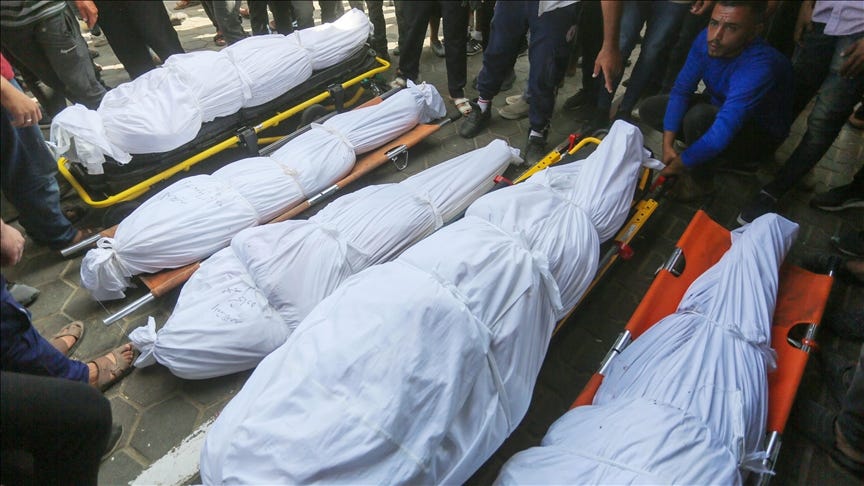
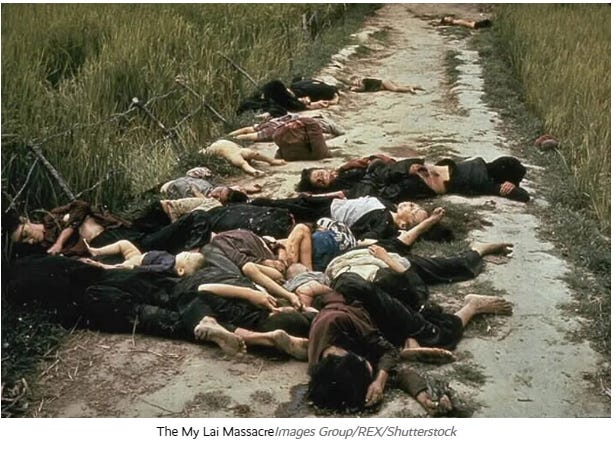



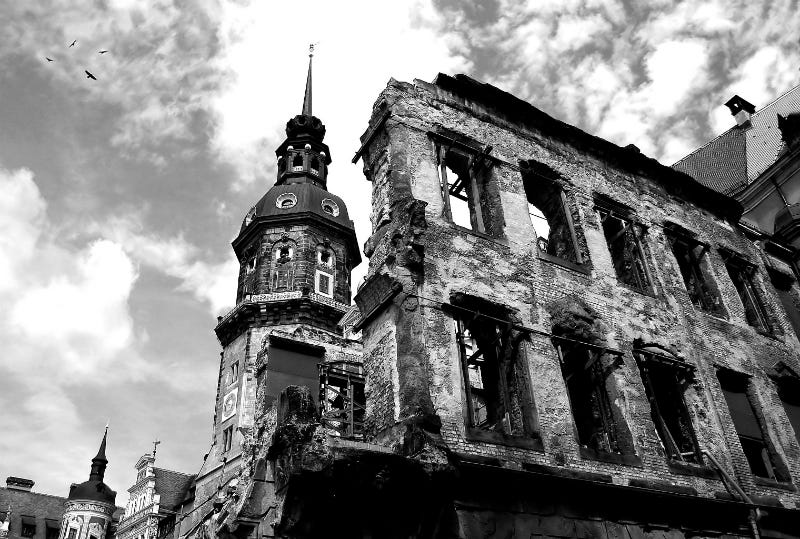







!['Balfour had pledged my homeland to another people' [Getty Images] 'Balfour had pledged my homeland to another people' [Getty Images]](https://substackcdn.com/image/fetch/$s_!eg_l!,w_1456,c_limit,f_auto,q_auto:good,fl_progressive:steep/https%3A%2F%2Fsubstack-post-media.s3.amazonaws.com%2Fpublic%2Fimages%2Fbf40baaf-8bbd-4000-901f-1243688067a3_1000x562.jpeg)
![A rally in Beirut commemorating the Balfour declaration in 1945 [Getty Images] A rally in Beirut commemorating the Balfour declaration in 1945 [Getty Images]](https://substackcdn.com/image/fetch/$s_!rD8Z!,w_1456,c_limit,f_auto,q_auto:good,fl_progressive:steep/https%3A%2F%2Fsubstack-post-media.s3.amazonaws.com%2Fpublic%2Fimages%2F3b6c51c7-448a-4e19-8940-c471ad5253dd_1000x562.jpeg)
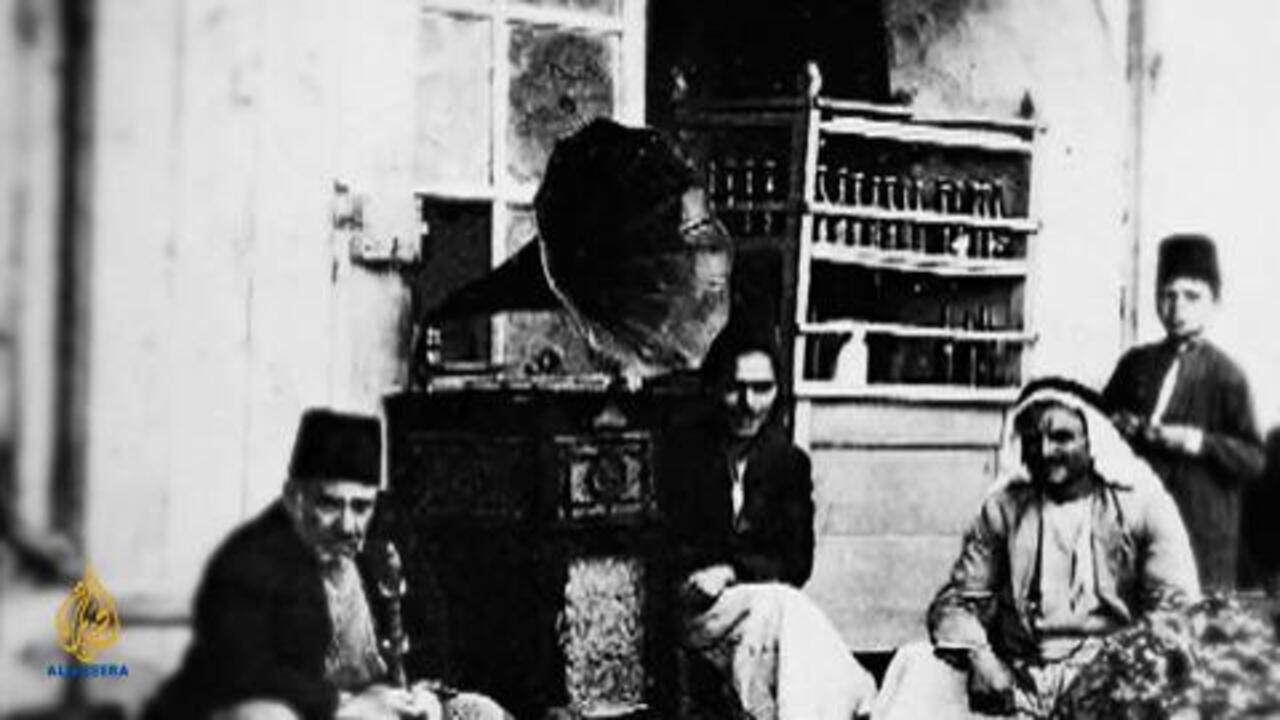

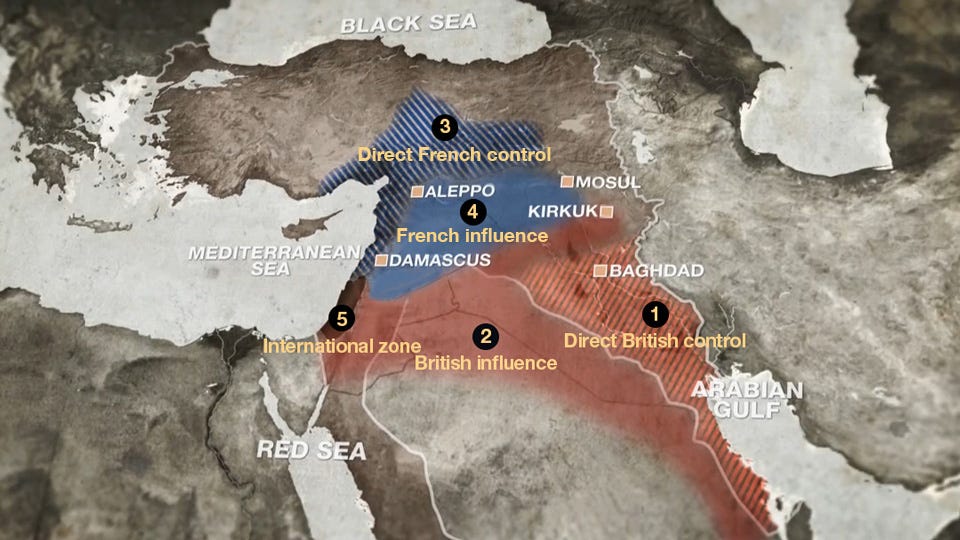

Can we call her a spade? 🤔